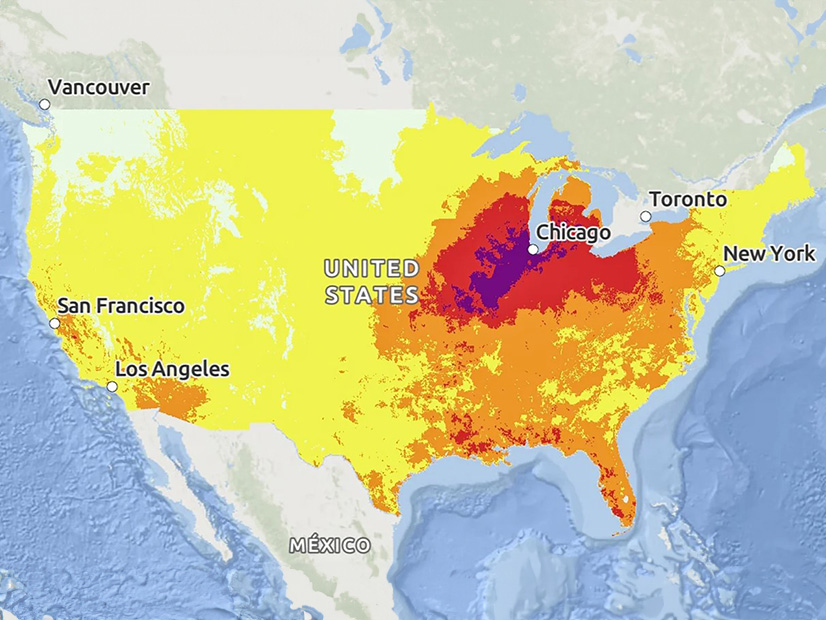CARMEL, Ind. — MISO set its 122-GW summertime peak on the unofficial last week of summer, with widespread heat necessitating back-to-back maximum generation warnings.
MISO instituted two separate maximum generation warnings Aug. 26-27 for the Midwest region after issuing conservative operations and a capacity advisory beginning Aug. 25. Much of the footprint registered over 90 degrees on Aug. 26, with a blistering heatwave parked over the Midwest.
“MISO and our members reliably served the highest demand of the summer season due to the extreme heat across our North and Central Regions,” spokesperson Brandon Morris said in a statement to RTO Insider. “The declarations we issued allowed us to access the necessary resources to maintain reliability.”
MISO said the emergency warnings were due to culmination of the higher-than-normal temperatures, forced generation outages and limited transfer capabilities. As it dealt with the heat wave on Aug. 26, MISO sent reminders to market participants with external resources that their interchange schedules must match their capacity obligations to MISO.
The RTO realized a summertime peak of 122 GW on Aug. 26. At an Aug. 29 Reliability Subcommittee, MISO’s John Harmon noted that the peak bested July’s high of 118 GW. MISO originally forecasted a summer peak of 123 GW to occur in July. (See “July Peak Prediction Unfulfilled,” MISO Predicts Painless Fall Despite Missouri Capacity Shortfall.)
“We did have a couple of maximum generation warnings due to the hot weather and lower than normal wind. We managed through that well,” Harmon said. He promised MISO would deliver a more thorough review of the event once it gathers the data for a stakeholder presentation.
Coal and natural gas supplied roughly 70% of demand over the heat wave’s most intense daytime hours. While the warnings were in place, MISO also relied on a few gigawatts of imports from PJM, although it, too, was contending with high temperatures.
The situation was helped Aug. 26 by thunderstorms that developed across western Minnesota and moved across central and eastern Minnesota into western Wisconsin.
MISO’s growing solar fleet also may have helped the footprint meet demand. The RTO is nearing 7-GW monthly solar peaks.
After Aug. 27, the system returned to normal operating conditions.



